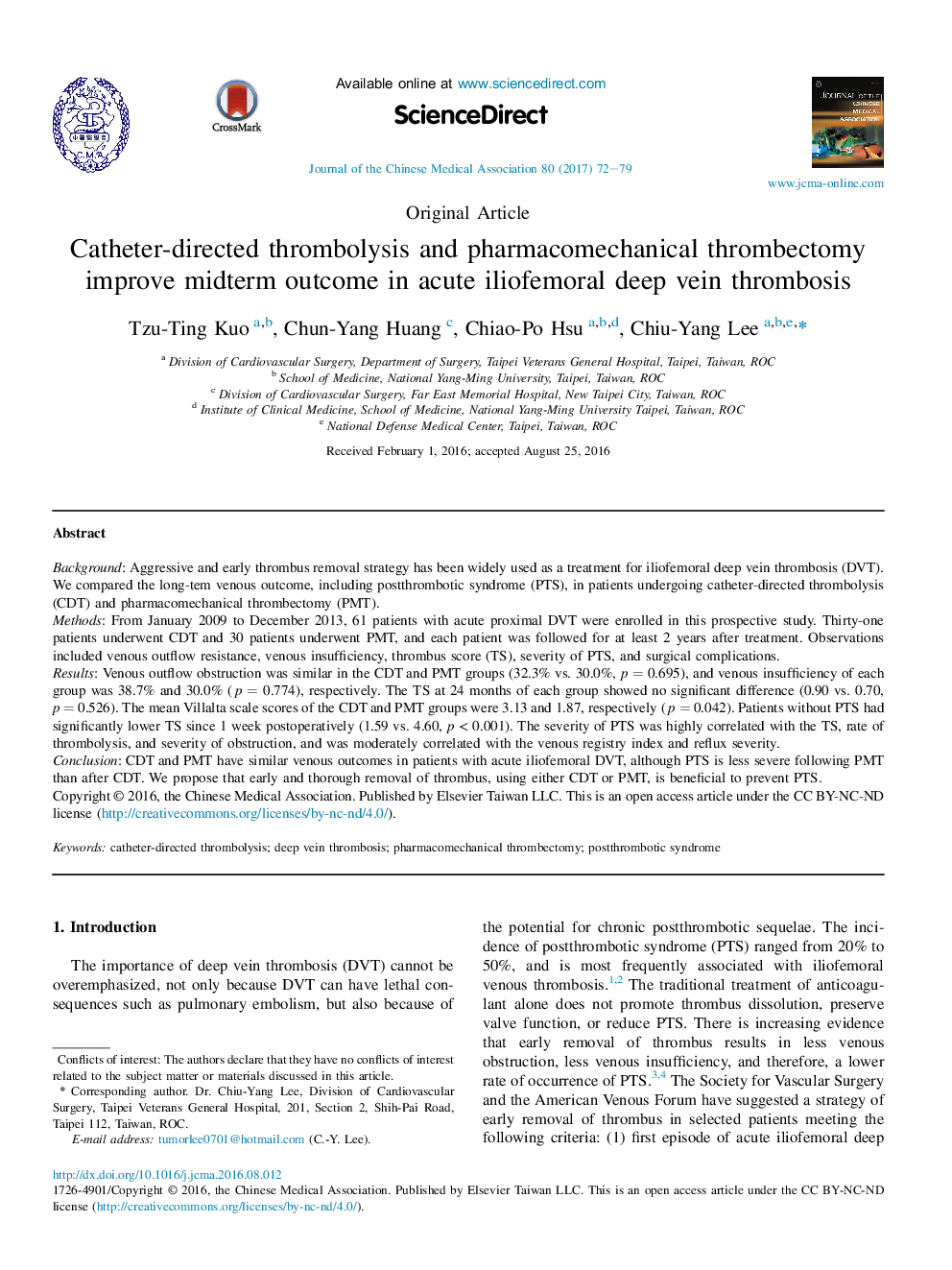| Article ID | Journal | Published Year | Pages | File Type |
|---|---|---|---|---|
| 5679816 | Journal of the Chinese Medical Association | 2017 | 8 Pages |
BackgroundAggressive and early thrombus removal strategy has been widely used as a treatment for iliofemoral deep vein thrombosis (DVT). We compared the long-tem venous outcome, including postthrombotic syndrome (PTS), in patients undergoing catheter-directed thrombolysis (CDT) and pharmacomechanical thrombectomy (PMT).MethodsFrom January 2009 to December 2013, 61 patients with acute proximal DVT were enrolled in this prospective study. Thirty-one patients underwent CDT and 30 patients underwent PMT, and each patient was followed for at least 2 years after treatment. Observations included venous outflow resistance, venous insufficiency, thrombus score (TS), severity of PTS, and surgical complications.ResultsVenous outflow obstruction was similar in the CDT and PMT groups (32.3% vs. 30.0%, p = 0.695), and venous insufficiency of each group was 38.7% and 30.0% (p = 0.774), respectively. The TS at 24 months of each group showed no significant difference (0.90 vs. 0.70, p = 0.526). The mean Villalta scale scores of the CDT and PMT groups were 3.13 and 1.87, respectively (p = 0.042). Patients without PTS had significantly lower TS since 1 week postoperatively (1.59 vs. 4.60, p < 0.001). The severity of PTS was highly correlated with the TS, rate of thrombolysis, and severity of obstruction, and was moderately correlated with the venous registry index and reflux severity.ConclusionCDT and PMT have similar venous outcomes in patients with acute iliofemoral DVT, although PTS is less severe following PMT than after CDT. We propose that early and thorough removal of thrombus, using either CDT or PMT, is beneficial to prevent PTS.
